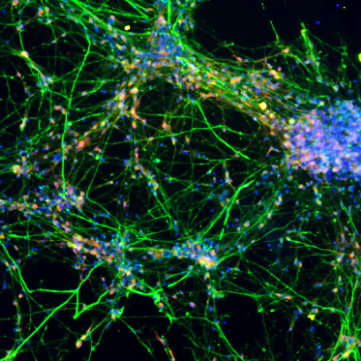
JRC scientists – in close collaboration with experts from international organisations - develop, evaluate and promote non-animal testing strategies based on in vitro methods to improve the regulatory assessment of chemicals which may cause developmental neurotoxicity (DNT) effects.
Currently there is only very limited information on potential developmental neurotoxicity (DNT) effects of the many thousands of chemicals that we come into contact with in our daily lives.
Moreover, experts on DNT from the JRC, US EPA, OECD and academia reached a consensus that this issue cannot be overcome with current regulatory testing approaches which are based solely on conventional animal tests. This is because animal models for DNT poorly reflect key features of human biology and disease and are typically very expensive and time consuming to conduct.
Children are particularly vulnerable to DNT related health effects.
Recent studies have clearly shown an increase in the prevalence of conditions such as:
- autism,
- learning disabilities,
- attention deficit and
- hyperactivity.
While these disorders are due to a combination of multiple causes including inherited predisposition, environmental stressors and factors linked to socioeconomic status, both laboratory and human studies indicate that exposure to hazardous chemicals can contribute significantly to DNT related effects.
Recently, scientists from the JRC and the Norwegian Institute for Public Health came together for a workshop to discuss the Children's health and exposure to environmental chemicals.
A particular focus was on the integration of multiple sources of information for DNT assessment derived from biomonitoring campaigns, epidemiological studies, computational models and in vitro methods.
JRC scientists propose to use mechanistic knowledge described in Adverse Outcome Pathways (AOPs) to rationally combine diverse but complementary data in the context of Integrated Approaches to Testing and Assessment (IATA). Such IATA will address various regulatory needs including chemical screening and prioritization, hazard identification and characterization and the safety assessment of combined exposure to multiple chemicals (i.e. the 'mixtures' challenge).
It is strongly believed that an application of currently available human-relevant in vitro models derived from induced pluripotent stem cells combined with other proposed non-animal approaches will permit development of predictive models for DNT effects for better protection of pregnant women, infants and children exposed to environmental chemicals.
Thus the JRC has been working with the DNT community to define a set of criteria that can be applied to judge the readiness of currently available in vitro methods for regulatory application.
Read more in:
- E. Fritsche et al.: Consensus statement on the need for innovation, transition and implementation of developmental neurotoxicity (DNT) testing for regulatory purposes. Toxicol Appl Pharmacol. 2018; (doi: 10.1016/j.taap.2018.02.004).
- A. Bal-Price et al.: Strategies to improve the regulatory assessment of Developmental Neurotoxicity (DNT) using in vitro methods. Toxicol Appl Pharmacol. 2018; doi: 10.1016/j.taap.2018.02.008.
- A.Bal-Price et al.: Recommendation on test readiness criteria for new approach methods in toxicology: exemplified for developmental neurotoxicity (DNT). ALTEX, 2018 (doi: 10.14573/altex.1712081).
- M. Oddvar et al.: Early life exposure to air pollution particulate matter (PM) as risk factor for attention deficit/ hyperactivity disorder (ADHD): need for novel strategies for mechanisms and causalities. Toxicol Appl Pharmacol. 2018 (doi: 10.1016/j.taap.2018.03.015).
- M. Sachana et al.: Development of the Adverse Outcome Pathway (AOP): chronic binding of antagonist to N-methyl-D-aspartate receptors (NMDARs) during brain development induces impairment of learning and memory abilities of children. Toxicol Appl Pharmacol. 2018 (doi: 10.1016/j.taap.2018.02.024).
Related Content
Details
- Publication date
- 27 July 2018
